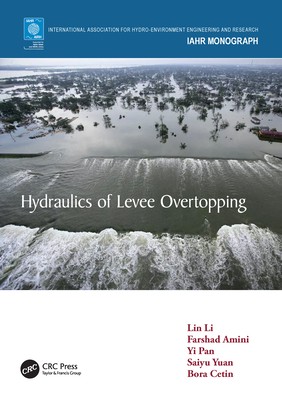
- We will send in 10–14 business days.
- SAVE -10% with code: EXTRA
Reviews
Description
Earthen levees are extensively used to protect the population and infrastructure from periodic floods and high water due to storm surges. The causes of failure of levees include overtopping, surface erosion, internal erosion, and slope instability. Overtopping may occur during periods of flooding due to insufficient freeboard. The most problematic situation involves the levee being overtopped by both surge and waves when the surge level exceeds the levee crest elevation with accompanying wave overtopping. Overtopping of levees produces fast-flowing, turbulent water velocities on the landward-side slope that can potentially damage the protective grass covering and expose the underlying soil to erosion. If overtopping continues long enough, the erosion may eventually result in loss of levee crest elevation and possibly breaching of the protective structure. Hence, protecting levees from erosion by surge overflow and wave overtopping is necessary to assure a viable and safe levee system.
This book presents a cutting-edge approach to understanding overtopping hydraulics under negative free board of earthen levees, and to the study of levee reinforcing methods. Combining soil erosion test, full-scale laboratory overtopping hydraulics test, and numerical modeling for the turbulent overtopping hydraulics. It provides an analysis that integrates the mechanical and hydraulic processes governing levee overtopping occurrences and engineering approaches to reinforce overtopped levees. Topics covered: surge overflow, wave overtopping and their combination, full-scale hydraulic tests, erosion tests, overtopping hydraulics, overtopping discharge, and turbulent analysis.
This is an invaluable resource for graduate students and researchers working on levee design, water resource engineering, hydraulic engineering, and coastal engineering, and for professionals in the field of civil and environmental engineering, and natural hazard analysis.
EXTRA 10 % discount with code: EXTRA
The promotion ends in 20d.01:25:05
The discount code is valid when purchasing from 10 €. Discounts do not stack.
- Author: Lin Li
- Publisher: CRC Press
- ISBN-10: 0367535076
- ISBN-13: 9780367535070
- Format: 17.4 x 24.6 x 1.3 cm, softcover
- Language: English English
Earthen levees are extensively used to protect the population and infrastructure from periodic floods and high water due to storm surges. The causes of failure of levees include overtopping, surface erosion, internal erosion, and slope instability. Overtopping may occur during periods of flooding due to insufficient freeboard. The most problematic situation involves the levee being overtopped by both surge and waves when the surge level exceeds the levee crest elevation with accompanying wave overtopping. Overtopping of levees produces fast-flowing, turbulent water velocities on the landward-side slope that can potentially damage the protective grass covering and expose the underlying soil to erosion. If overtopping continues long enough, the erosion may eventually result in loss of levee crest elevation and possibly breaching of the protective structure. Hence, protecting levees from erosion by surge overflow and wave overtopping is necessary to assure a viable and safe levee system.
This book presents a cutting-edge approach to understanding overtopping hydraulics under negative free board of earthen levees, and to the study of levee reinforcing methods. Combining soil erosion test, full-scale laboratory overtopping hydraulics test, and numerical modeling for the turbulent overtopping hydraulics. It provides an analysis that integrates the mechanical and hydraulic processes governing levee overtopping occurrences and engineering approaches to reinforce overtopped levees. Topics covered: surge overflow, wave overtopping and their combination, full-scale hydraulic tests, erosion tests, overtopping hydraulics, overtopping discharge, and turbulent analysis.
This is an invaluable resource for graduate students and researchers working on levee design, water resource engineering, hydraulic engineering, and coastal engineering, and for professionals in the field of civil and environmental engineering, and natural hazard analysis.


Reviews